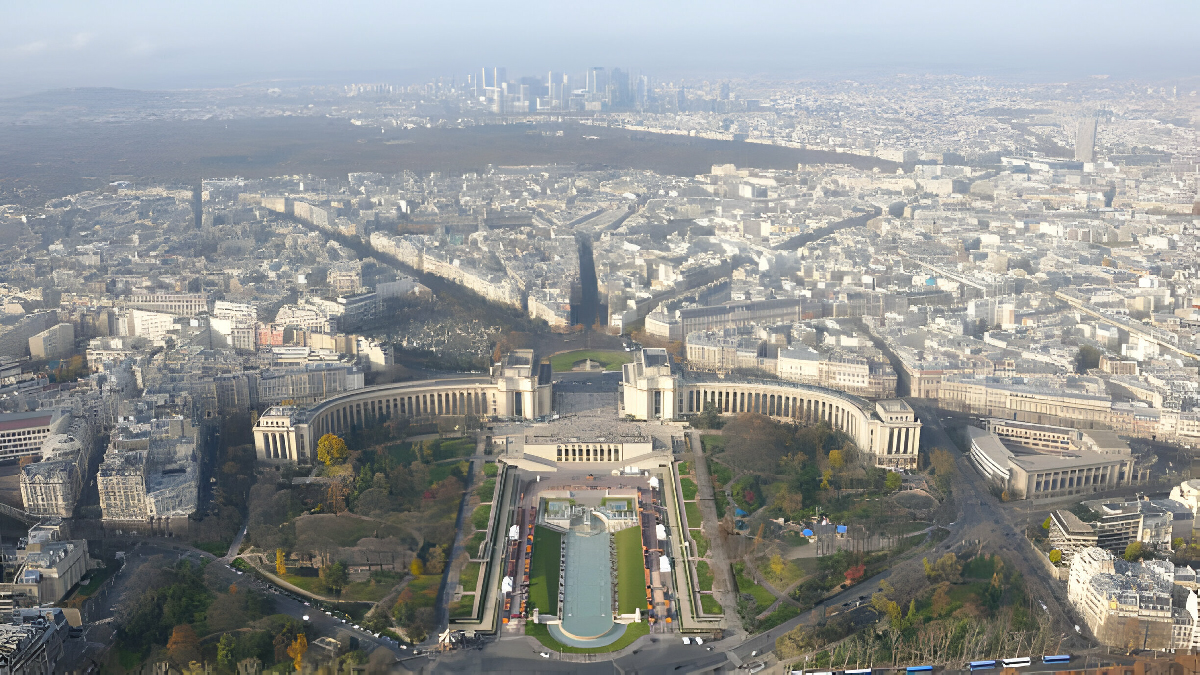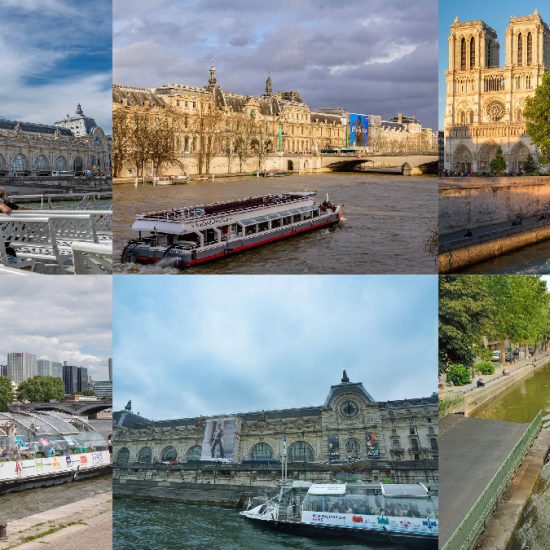Table Of Content
I love art. But finding the right Impressionist Museum in Paris can be tricky. There are so many options—and not all are worth your time. I’ve walked into museums hoping to see Monet, only to leave disappointed.
Some feel crowded. Others lack that magic spark true impressionist lovers crave. Wasting hours on the wrong museum? That stings—especially on a tight Paris schedule.
I’ve been there. So I did the homework for you. In this guide, I’ll show you the top 5 spots that truly impress. No fluff. Just real museums with real masterpieces that will stay with you forever.
Key Takeaways
- Not all Paris museums showcase Impressionism equally – some are crowded or lack key works.
- Musée d’Orsay is the top Impressionist museum in Paris, with masterpieces by Monet, Degas, and Van Gogh.
- Musée de l’Orangerie offers an intimate Monet experience with his full Water Lilies series in oval rooms he designed.
- The Louvre features both classical and notable Impressionist works, including paintings by Renoir and Cézanne.
- Smaller museums like Marmottan Monet and Picasso Museum add unique depth to Paris’s art scene, though only some focus on Impressionism.
Where is The Impressionist Museum in Paris
There is no unique museum in Paris recognized as an “Impressionist Museum in Paris .”The Musée d’Orsay in Paris, on the other hand, is famous for its huge number of Impressionist and Post-Impressionist masterpieces.
The museum is located in what was once Gare d’Orsay, a railway station on the Seine’s Left Bank. The Musée d’Orsay has the globe’s greatest collection of original famous impressionist museums in Paris, featuring works by Monet, Renoir, Degas, and Van Gogh, among others. It covers the years 1848 to 1914 and includes various kinds of art from different periods.
The Musée de l’Orangerie is located in Paris, France. Specifically, it is situated in the Jardin des Tuileries, a beautiful garden near the Louvre Museum. The museum’s address is:(Musée de l’Orangerie Jardin des Tuileries Place de la Concorde 75001 Paris France)
The Louvre Museum, also known as the Musée du Louvre, is located in Paris, France. The museum is situated on the right bank of the Seine River in the 1st arrondissement, near the Palais Royal and the Jardin des Tuileries. The full address of the Louvre Museum is:( Louvre Museum (Musée du Louvre) Rue de Rivoli 75001 Paris, France).
Famous Impressionist Museum in Paris tickets
Visiting famous Impressionist museums in Paris is a compelling and enriching experience for several reasons. Beyond the educational aspects, visiting these museums is a delightful cultural experience. The ambience, architecture, and carefully curated collections create an atmosphere where art enthusiasts can immerse themselves in the beauty of Impressionist masterpieces.
In essence, a visit to famous Impressionist museums in Paris offers an unparalleled journey into the world of art, fostering a deeper understanding and appreciation for this influential movement.
Here we are providing the famous Impressionist museum in Paris ticket info-
1. Musée d’Orsay

The Musée d’Orsay is one of my favorite places in Paris. It’s inside an old train station, which makes it feel both historic and grand.
This Impressionist Museum in Paris has paintings from the late 1800s to the early 1900s. You’ll see famous works by Monet, Renoir, Cézanne, Gauguin, and more.
What I love most is how much French art is here. It’s not just pretty—it tells the story of how Impressionism changed art forever.
The museum also has art by Manet, Degas, Delacroix, Caillebotte, and even Van Gogh. You can watch how light, color, and brushstrokes evolved over time.
Planning to visit? Get your Musée d’Orsay tickets here. If tickets are sold out, don’t worry—there are last-minute ticket options too.
For guaranteed entry with skip-the-line access, I recommend booking through this trusted platform. That’s how I got in without waiting.
2. Musée de l’Orangerie

If you love Monet, the Musée de L’Orangerie is a must-see in Paris. It’s most famous for his giant Water Lilies paintings—eight of them, all in one place.
Monet planned these rooms himself. Two big oval rooms were built to show the paintings exactly how he wanted. Standing there feels like stepping into his garden in Giverny on a warm summer day.
Photos don’t do them justice. You need to see them in person to feel their beauty.
The museum opened in 1927 and quickly became a favorite for art lovers. Besides Monet, you’ll also find works by Renoir, Manet, Matisse, and Picasso.
These paintings are huge—about two meters tall—and they surround you completely. That’s what makes this museum so special. You experience the art just as Monet imagined.
If you’re curious about the history of the Orangerie Museum, it’s worth reading before your visit. Want to avoid long lines? Here’s what to do if tickets are sold out. Also, find the best time to go so you don’t miss the peaceful vibe.
To skip the line and get right in, I used this reserved access ticket with audio guide. You can also grab a combo ticket for both Orangerie and Orsay here. Or just book your Musée de L’Orangerie ticket easily through this trusted site.
3. The Musée du Louvre

The Musée du Louvre is one of the most famous museums in the world. It opened in 1793 and is filled with over 300,000 pieces of art.
You’ll find everything from ancient sculptures to world-famous paintings like the Mona Lisa and Venus de Milo. The museum is massive, and every room has something special.
Even though it’s known for older art, the Louvre also has a strong Impressionist collection. You can see works by Monet, Renoir, and Cézanne—all legends of the movement.
To me, this is more than a museum. It’s a place where art history comes to life. If you love Impressionism or just want to see great art, the Louvre is a must.
Planning your visit? Here’s a helpful guide on how to get from the Eiffel Tower to the Louvre. You can also explore what to see inside and learn about the Louvre’s history.
Looking for things nearby? Check out this list of activities near the Louvre or see how to visit both the Louvre and Arc de Triomphe.
Skip the long lines by grabbing your Louvre tickets here. For a better experience, try this reserved access guided tour or book your entry tickets directly. Want to see more of Paris in one go? Try this combo: Louvre Museum + Seine River Cruise + Hop-On Hop-Off Bus.
4. Musée Marmottan Monet

The Musée Marmottan Monet is a museum situated in the 16th arrondissement of Paris, France. While it is not entirely a famous Impressionist museum in Paris, it is particularly renowned for its extensive collection of works by the Impressionist painter Claude Monet.
The museum, situated in a former hunting lodge, contains an extensive collection of Monet’s paintings, personal possessions, and other objects.
The Musée Marmottan Monet provides an unusual chance to examine Monet’s artistic advancement, exhibiting his iconic Water Lilies series, Haystacks, and other significant works.
The museum also exhibits works by other Impressionist painters, as well as pieces from the Nabis movement and other painters from the late nineteenth and start of the twentieth century, alongside Monet’s masterpieces.
While not quite as enormous as the other impressionist museums in Paris, the Musée Marmottan Monet offers an intimate and focused atmosphere for anybody interested in Claude Monet’s life and artwork, as well as the larger background of Impressionism.
5. Musée National Picasso

The Musée National Picasso, typically referred to as the Picasso Museum, is not a general Impressionist museum in Paris, France. It is situated in the Marais area.
The museum is located in the 17th-century mansion Hôtel Salé. The museum is devoted to Pablo Picasso’s works and houses a large collection of his paintings, sculptures, drawings, ceramics, and other works.
It allows visitors to look at the development of Picasso’s paintings throughout his effective career.
The Musée National Picasso is a significant cultural organization in Paris that attracts art lovers from every corner of the world.
FAQ (frequently asked question)
Are there educational programs available at these museums?
Many of these museums offer educational programs, guided tours, and interactive exhibits, providing visitors with opportunities to deepen their understanding of art history and gain insights into the techniques employed by Impressionist artists.
What kind of experience can visitors expect at the Musée d’Orsay?
The Musée d’Orsay, housed in an abandoned railway station, provides a captivating experience with its extensive collection spanning the late 19th to early 20th centuries. Visitors can marvel at works by renowned French artists, including Monet, Renoir, Cézanne, and Gauguin.
Why should one visit famous Impressionist Museums in Paris?
Visiting these museums offers a unique opportunity to witness masterpieces from the Impressionist movement, understand the cultural significance of Impressionism, immerse oneself in the evolution of art, and experience the vibrant atmosphere of Paris as a hub for artistic inspiration.
Is the Musée National Picasso an Impressionist Museum in Paris?
No, the Musée National Picasso, also known as the Picasso Museum, is not exclusively focused on Impressionism. It is dedicated to the works of Pablo Picasso and features a large collection of his paintings, sculptures, drawings, ceramics, and more.
Final Thoughts: French Impressionist Museum in Paris
In conclusion, Paris shows off an array of remarkable French impressionist museums in Paris, each offering a unique perspective on Impressionist art.
The Musée d’Orsay stands as a beacon with its extensive collection, while the Musée de l’Orangerie captivates visitors with Monet’s iconic water lilies.
The Musée du Louvre, although renowned for classical treasures, also holds a significant collection of Impressionist museums in Paris.
The Musée Marmottan Monet, with its intimate setting, provides a focused exploration of Claude Monet’s life and art.
While the Musée National Picasso is not an Impressionist museum in Paris, it enriches Paris’s cultural landscape with a profound focus on Picasso’s groundbreaking works.
Each museum offers a distinct journey through art history, making Paris a haven for art enthusiasts. You can explore the enigmatic shadows of the Haunted Catacombs of Paris.








No Comment! Be the first one.